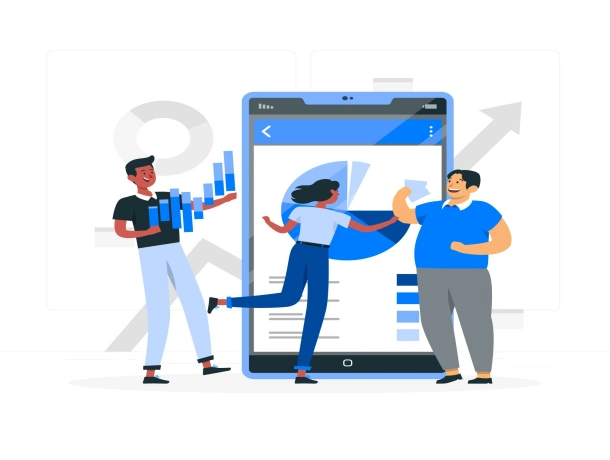
- May 16, 2025
- Digital Marketing, seo
- Search Engine Optimisation (SEO)
Table of Contents
Many organizations nowadays are heavily focused on driving large amounts of traffic to their websites, believing that more visits equal more sales or leads. They invest substantially in SEO, advertisements, and social media to increase visitor traffic, often without considering what happens once a person arrives on the site. While increasing traffic is crucial, it becomes a vanity statistic if the visitors do not convert. Without a good conversion plan in place, increased traffic does little to benefit the bottom line.
Understanding Conversion Rate

The conversion rate is an important performance indicator that calculates the percentage of visitors to your website who complete a desired activity, such as making a purchase, subscribing to a newsletter, downloading a resource, or submitting a form. It is obtained by dividing the number of conversions by the total number of visitors and multiplying by 100 to obtain the percentage.
For example, if 1,000 visitors visit your website and 50 make a purchase, your conversion rate is 5%.
Conversion rates vary depending on the sort of business, industry, and individual goals, but increasing them means that more of your present traffic converts into important activities like sales or leads. Unlike traffic, which merely shows the number of visitors, conversion rate displays how well your website is working in terms of generating actual outcomes that affect your business.
The Myth of More Traffic = More Sales
Many businesses fall into the trap of thinking that increasing visitors would inevitably result in greater sales. While it is true that more visitors can lead to conversions, just increasing traffic to your site does not guarantee that those visitors will become customers.
- Quality versus Quantity: Not all traffic is created equally. If you’re getting visitors who aren’t interested in your products or services, or if your traffic is from the wrong demographic, they’re less likely to convert. The emphasis should be on generating the correct kind of traffic—users who are really interested in what you’re offering.
- Conversion rate is very important: A high-traffic website with a low conversion rate may nonetheless struggle to generate sales. In contrast, a website with a smaller, more specialized audience but a higher conversion rate would frequently outperform in terms of income. It is more important to get the right people to take the proper actions than to just attract a large number of visitors.
- Poor user experience: More traffic without improving the user experience (UX) may result in higher bounce rates and a lack of engagement. Even if you boost traffic, a website that is slow, difficult to access, or not mobile-friendly is unlikely to turn visitors into customers.
- The importance of engagement: Traffic alone does not indicate how engaged visitors are. If users come to your site and then leave without interacting, it’s a clear indication that the user experience, messaging, or product offering isn’t compelling enough to keep their attention.
The misconception that “more traffic equals more sales” misses the necessity of converting visitors into paying clients. Businesses may maximize their existing traffic by concentrating on improving conversion rates, ensuring that each visit has the potential to result in meaningful outcomes.
The Power of Conversion Rate Optimization (CRO)
Conversion Rate Optimization (CRO) is a powerful strategy for raising the percentage of visitors that perform a desired action on your website. Rather than simply boosting traffic, CRO seeks to optimize the value of existing traffic. By improving your website’s design, user experience, content, and calls-to-action (CTAs), you may encourage more people to become customers, leads, or subscribers.
Here's why CRO is so effective:
- Maximizing Existing Traffic: CRO allows you to get more value out of the traffic you already have, without having to spend more money acquiring new people. Small improvements in conversion rate can lead to big increases in revenue or lead generation. For example, raising your conversion rate by just 1% might have a significantly greater impact than increasing traffic by 10%..
- Higher Return on Investment (ROI): Businesses that improve their conversion rates experience a higher ROI on their marketing and advertising spend. Instead of constantly investing in new visitors, CRO ensures that each visit has a better chance of converting into a sale, lowering the cost per acquisition and increasing profitability.
- Cost-Efficient Growth: Growing your traffic necessitates constant investments in SEO, advertising, and social media marketing. CRO, on the other hand, offers a more cost-effective method of scaling by increasing the performance of your existing website users. This might be a game changer for companies with tight marketing resources or those searching for quick success.
- Enhanced User Experience: CRO focuses on improving the user experience. By improving navigation, streamlining the checkout process, and making your website user-friendly, you enhance the likelihood that visitors will take action. A better experience not only increases conversions, but it also fosters trust and encourages return visitors.
CRO makes data-driven decisions by continuously testing and analyzing what works and doesn’t. Businesses can employ A/B testing, heatmaps, user surveys, and analytics to make informed decisions about how to improve the performance of their websites. This iterative process ensures that your website improves in a way that effectively meets the needs of consumers.
CRO is an important part of any digital marketing plan. It’s not about generating more traffic; it’s about maximizing the traffic you already have. By focusing on raising your conversion rate, you can realize your website’s full potential, resulting in more significant outcomes and long-term success for your business.
Why Focusing on Conversion Improves ROI

Concentrating on conversion rate optimization (CRO) is one of the most efficient ways to increase your return on investment (ROI) in digital marketing and website performance. Rather than constantly investing resources in drawing more visitors, improving conversions guarantees that you get the most out of the traffic you already have, resulting in more sales, leads, or other desired actions with less work.
Here's how focusing on conversion directly increases ROI:
- Maximizes existing traffic: Increasing your conversion rate indicates that more of your current visitors will do the required activities (such as purchasing or subscribing to a newsletter). Instead of investing more money on advertising or SEO to attract new visitors, you increase the value of your current visitors. This decreases the need for ongoing expenditure in generating new traffic, hence increasing your ROI.
- Lower cost per acquisition (CPA): By increasing your conversion rate, you may significantly reduce your cost per acquisition. If your website converts more visitors with the same marketing budget, your cost per customer or lead reduces, resulting in a higher ROI. This is particularly important in businesses where advertising expenses are high or rising over time.
- Better Use of Marketing Budgets: CRO enables you to get more value out of your marketing expenditure. Rather than investing a lot of money to generate traffic to a site that isn’t converting, concentrating on conversion optimization ensures that your cash is being used properly. Your marketing efforts will provide better results if you use better-performing landing pages, optimized CTAs, and a seamless user experience.
- Increased customer lifetime value (LTV): A well-optimized website does more than just increase initial conversions; it also improves the total customer experience, which can lead to higher client retention and loyalty. Returning customers or repeat purchases often have a higher lifetime value (LTV), which helps greatly with long-term ROI. Converting more users initially allows you to invest in developing connections with those clients, resulting in long-term revenue growth.
- Data-Driven Improvements: CRO is built on observable data, which allows you to continuously monitor what works and what doesn’t. This enables organizations to fine-tune their strategy and focus on the approaches that produce the highest results. A/B testing, heatmaps, and user feedback can reveal actionable insights that have a direct impact on conversions, ensuring that every decision is data-driven and focused on attaining the best ROI.
- Scalable Growth: Improving conversions lays the groundwork for long-term and scalable growth. Rather than relying on constantly obtaining new traffic to fuel growth, focusing on CRO allows you to scale more effectively. Even minor improvements in website traffic can result in large gains in sales and revenue, resulting to a higher total ROI as your company grows.
Emphasizing conversion rate improvement is an effective method for increasing ROI. By making your existing website visitors work harder and smarter, you may increase conversions, lower customer acquisition expenses, and improve overall performance—all of which lead to a higher return on your marketing and business investment.
Conclusion
While boosting website traffic is vital, it should not overshadow the true engine of business growth: conversion. High traffic without conversions is equivalent to a store full of window shoppers who never make a purchase. Businesses that focus on Conversion Rate Optimization (CRO) can maximize the potential of their existing visitors, improve user experience, lower client acquisition expenses, and, ultimately, increase ROI. Instead than chasing more clicks, the smarter plan is to convert your existing traffic into measurable, meaningful results. In today’s competitive digital market, conversion is more than simply a number; it is a growth strategy.











